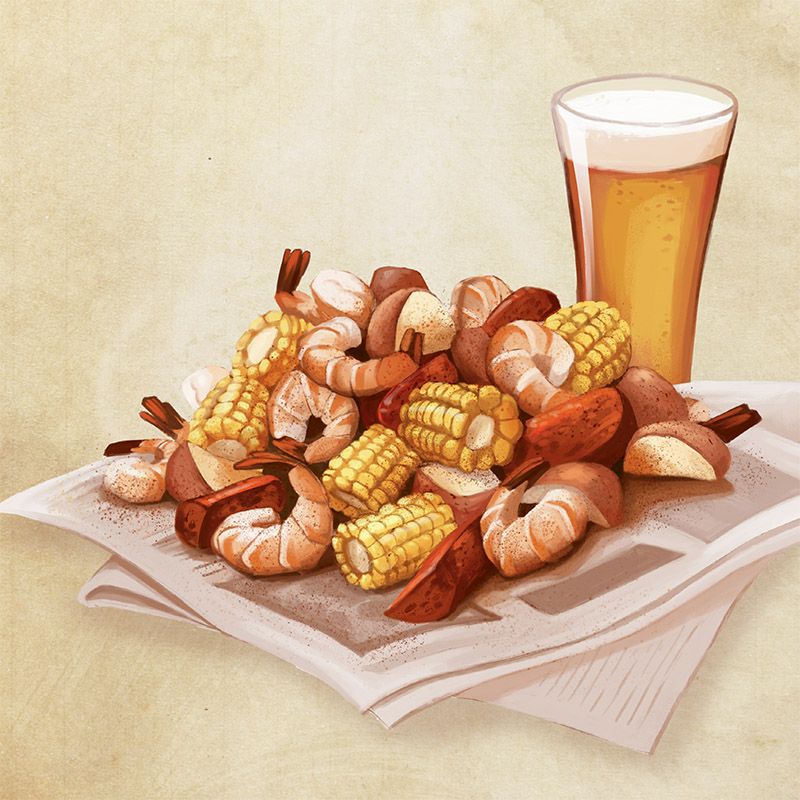This is Lowcountry cooking: a simple, yet flavorful, one-pot meal that combines fresh local shrimp, corn on the cob, red or new potatoes, and smoked sausage. Also known as “Frogmore Stew” and “Beaufort Stew” (though it’s not a stew), it is as easy to prepare as it is to enjoy

Simple Steps The secret to a perfect Lowcountry Boil? Avoid overcooking each ingredient. First, gently place in the new or red potatoes (15 minutes), then the corn and sausage (five minutes), and finally the shrimp, still in their shells (no more than five minutes). Unlike a bouillabaisse, the cooking liquid is drained prior to eating, and the meal is often served outdoors on the most effortless platter of all—a newspaper-covered table, which makes cleanup a breeze.
Traditional Fare The popularity of seafood boils in the Lowcountry is rooted in the social traditions of the Gullah-Geechee people. Enslaved African Americans kept their culinary traditions alive while working on plantations, including making one-pot meals using readily available seafood and vegetables to serve large gatherings of people, especially during times of celebration.
One Pot Lucky The meal’s recent popularity dates to the 1960s when Robert Gay of Gay Seafood in the Frogmore area of St. Helena Island near Beaufort needed an efficient way to feed 100 fellow National Guardsmen. Adapting an old family recipe, he created the one-pot dish he dubbed “Frogmore Stew.” Its popularity soared after Gourmet magazine featured a photo of Gay’s recipe on the cover in the 1980s.
Buy Local Shrimp is the main ingredient, although the flexibility of this dish makes it acceptable to add other seafood such as stone crab legs, blue crabs, or clams. To achieve the right flavor, use only fresh, locally caught seafood.
Forget the Frogs The name “Frogmore Stew” comes from the Frogmore community on St. Helena Island, which was originally part of Frogmore Plantation, established in the 1700s by William Bull I. The plantation’s name references England’s Frogmore House, a residence used by royals as a country retreat since the time of Henry VIII. When the postal service dropped the name Frogmore, the dish also became known as “Beaufort Stew” or “Lowcountry Boil.”
Boil It: For the Gay Seafood recipe, visit: charlestonmag.com/recipes/frogmore_stew_0.